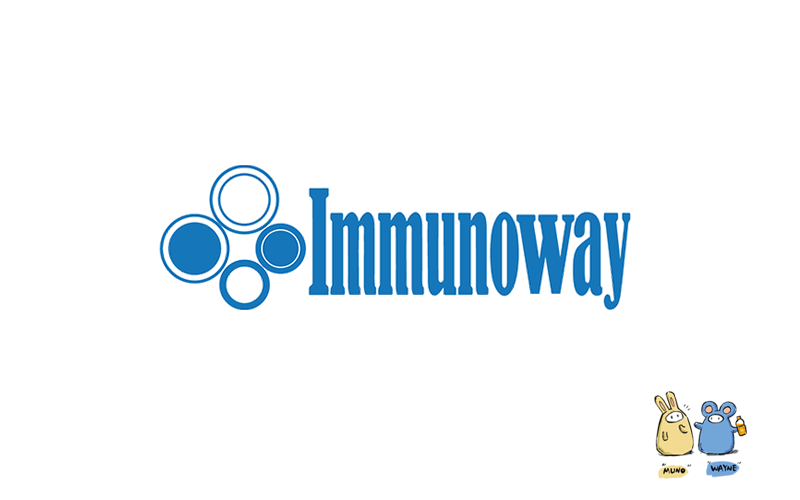
Catalog: YN1554
Size
Price
Status
Qty.
200μL
$450.00
In stock
0
100μL
$280.00
In stock
0
40μL
$150.00
In stock
0
Add to cart


Collected


Collect
Main Information
Target
ASPP2
Host Species
Rabbit
Reactivity
Human, Mouse
Applications
WB, ELISA
MW
124kD (Observed)
Conjugate/Modification
Unmodified
Detailed Information
Recommended Dilution Ratio
WB 1:500-2000; ELISA 1:5000-20000
Formulation
Liquid in PBS containing 50% glycerol,0.5% BSA and 0.02% sodium azide.
Specificity
ASPP2 Polyclonal Antibody detects endogenous levels of protein.
Purification
The antibody was affinity-purified from rabbit antiserum by affinity-chromatography using epitope-specific immunogen.
Storage
-15°C to -25°C/1 year(Do not lower than -25°C)
Concentration
1 mg/ml
MW(Observed)
124kD
Modification
Unmodified
Clonality
Polyclonal
Isotype
IgG
Related Products
Antigen&Target Information
Immunogen:
Synthesized peptide derived from human protein . at AA range: 60-140
show all
Specificity:
ASPP2 Polyclonal Antibody detects endogenous levels of protein.
show all
Gene Name:
TP53BP2 ASPP2 BBP
show all
Protein Name:
Apoptosis-stimulating of p53 protein 2 (Bcl2-binding protein) (Bbp) (Renal carcinoma antigen NY-REN-51) (Tumor suppressor p53-binding protein 2) (53BP2) (p53-binding protein 2) (p53BP2)
show all
Background:
This gene encodes a member of the ASPP (apoptosis-stimulating protein of p53) family of p53 interacting proteins. The protein contains four ankyrin repeats and an SH3 domain involved in protein-protein interactions. It is localized to the perinuclear region of the cytoplasm, and regulates apoptosis and cell growth through interactions with other regulatory molecules including members of the p53 family. Multiple transcript variants encoding different isoforms have been found for this gene. [provided by RefSeq, Jul 2008],
show all
Function:
Disease:Defects in TP53BP2 may be involved in breast cancer. TP53BP2 is down-regulated in many patients suffering from breast carcinomas and expressing a wild-type TP53 protein. Overexpressed in lung cancer cell lines.,Domain:The ankyrin repeats and the SH3 domain are required for a specific interactions with TP53.,Function:Regulator that plays a central role in regulation of apoptosis and cell growth via its interactions. Regulates TP53 by enhancing the DNA binding and transactivation function of TP53 on the promoters of proapoptotic genes in vivo. Inhibits the ability of APPBP1 to conjugate NEDD8 to CUL1, and thereby decreases APPBP1 ability to induce apoptosis. Impedes cell cycle progression at G2/M.,induction:Following DNA damage induced by UV irradiation. Down-regulated by wild-type, but not mutant, TP53.,similarity:Belongs to the ASPP family.,similarity:Contains 1 SH3 domain.,similarity:Contains 2 ANK repeats.,subcellular location:Predominantly found in the perinuclear region. Some small fraction is nuclear.,subunit:Binds to the central domain of TP53 as well as to BCL2. Interacts with protein phosphatase 1. Interacts with RELA NF-kappa-B subunit. This interaction probably prevents the activation of apoptosis, possibly by preventing its interaction with TP53. Interacts with APC2 and APPBP1.,tissue specificity:Widely expressed. Expressed in spleen, thymus, prostate, testis, ovary, small intestine, colon and peripheral blood leukocyte.,
show all
Cellular Localization:
Cytoplasm, perinuclear region. Nucleus. Predominantly found in the perinuclear region. Some small fraction is nuclear. Sequester in the cytoplasm on overexpression of DDX42.
show all
Tissue Expression:
Widely expressed. Expressed in spleen, thymus, prostate, testis, ovary, small intestine, colon and peripheral blood leukocyte. Reduced expression in breast carcinomas expressing a wild-type TP53 protein. Overexpressed in lung cancer cell lines.
show all
Research Areas:
>>Hippo signaling pathway
show all
Signaling Pathway
Reference Citation({{totalcount}})
Catalog: YN1554
Size
Price
Status
Qty.
200μL
$450.00
In stock
0
100μL
$280.00
In stock
0
40μL
$150.00
In stock
0
Add to cart


Collected


Collect
Recently Viewed Products
Clear allPRODUCTS
CUSTOMIZED
ABOUT US
Toggle night Mode
{{pinfoXq.title || ''}}
Catalog: {{pinfoXq.catalog || ''}}
Filter:
All
{{item.name}}
{{pinfo.title}}
-{{pinfo.catalog}}
Main Information
Target
{{pinfo.target}}
Reactivity
{{pinfo.react}}
Applications
{{pinfo.applicat}}
Conjugate/Modification
{{pinfo.coupling}}/{{pinfo.modific}}
MW (kDa)
{{pinfo.mwcalc}}
Host Species
{{pinfo.hostspec}}
Isotype
{{pinfo.isotype}}
Product {{index}}/{{pcount}}
Prev
Next
{{pvTitle}}
Scroll wheel zooms the picture
{{pvDescr}}



















